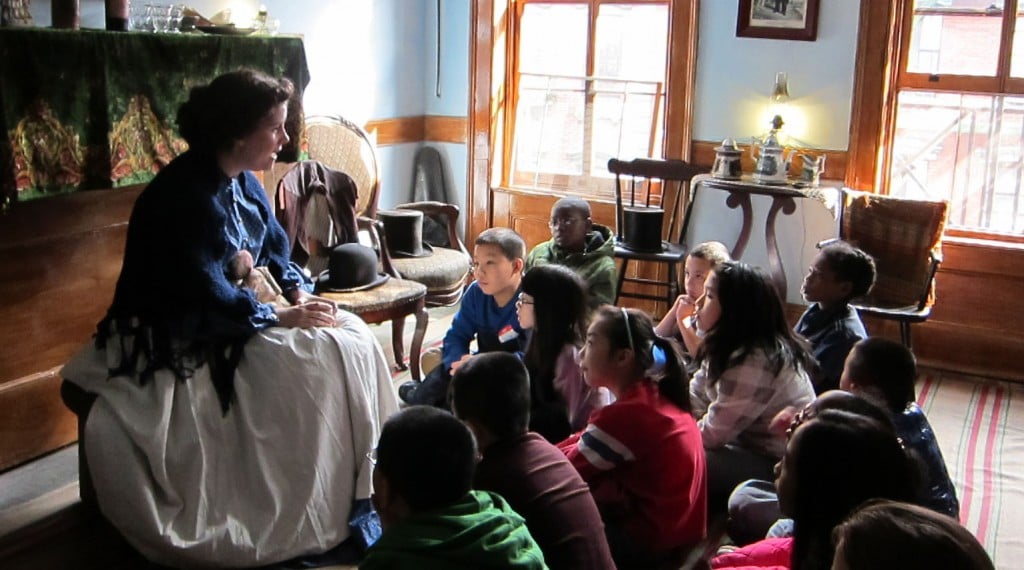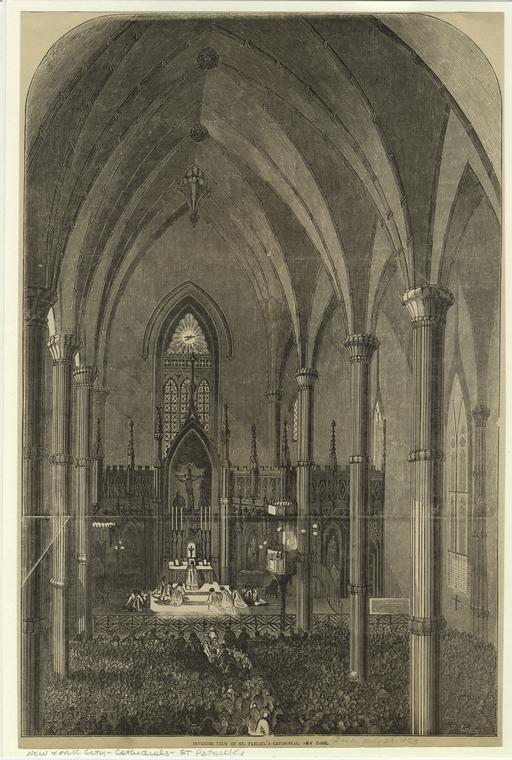Blog Archive
A Saint’s Day for Bridget
On one of our living history tours for school groups, students can meet Bridget Moore and explore the question: What does it feel like to move into a new home? Students imagine it’s the year 1868 as they help Bridget, a new resident at 97 Orchard Street, prepare for her housewarming party. They talk to Bridget about her experience as one of only two Irish families who lived at 97 Orchard in 1868, and learn to relate Bridget’s homesickness and resourcefulness to present-day circumstances that might cause a person to feel homesick, or be creative in adapting to a new place.
Recently, the Tenement Museum team has been grappling with a couple of questions. What was Bridget’s relationship to the Catholic Church in Ireland, and how might her Catholicism have been expressed once she arrived in America? What evidence of Bridget’s religion might our school groups see as Bridget plans a housewarming party with friends?
One of our favorite scholars of Irish history, Margaret (Peggy) Lynch-Brennan, Ph.D., had some wonderful suggestions. She described the reforms going on in the Catholic Church in Ireland during the second half of the nineteenth century, which would have shaped Bridget’s early upbringing. Attendance at Sunday Mass increased then, and people received the sacraments of Confession and Communion more often than in the past. Once in New York, on Sunday mornings, Bridget, her husband, and kids would have dressed in their best clothes, pocketed their rosaries, and walked to Old Saint Patrick’s Cathedral to sit together at Mass.
For Bridget, church in America would have been even more than a spiritual center; it would have been a social center, a place for her to counter feelings of homesickness or loneliness in a new place. Peggy suggested that at Bridget’s housewarming party, there could be subtle but effective ways of signifying Bridget’s relationship to religion. If someone told a sad or shocking story, for instance, Bridget and her friends might have made the ‘Sign of the Cross.’ And she would never serve meat or eat meat at a party held on a Friday.
Peggy also suggested an object that can be used to signify Bridget’s resourcefulness, Catholic faith, and Irish heritage, and give our Bridget interpreters another point of reference when they’re talking to school groups: Saint Bridget’s cross. This cross is typically made from straw, and crafted by children in honor of Brigid of Kildare, one of the patron saints of Ireland. Saint Bridget’s Day is celebrated February 1, and is considered the first day of Spring and field work because Saint Bridget promised that every second day thereafter would be “hard and dry.” Historically, on Saint Bridget’s Eve (January 31), country children would “pull rushes” (or tall grass) and take them into the house to make into crosses by the family who was gathered around the hearth. The crosses were hung in doorways and over beds to protect a house from fire and evil, and to bring good luck. In some places, the door was left unlatched so the Saint could come in and rest.
Putting this new knowledge to use, we’re in the process of adding Saint Bridget’s cross to our “Meet Bridget” interpretive program. Happy Saint Bridget’s Day to all! And for more about Bridget, check out this past blog post.
—Posted by Sarah Litvin

